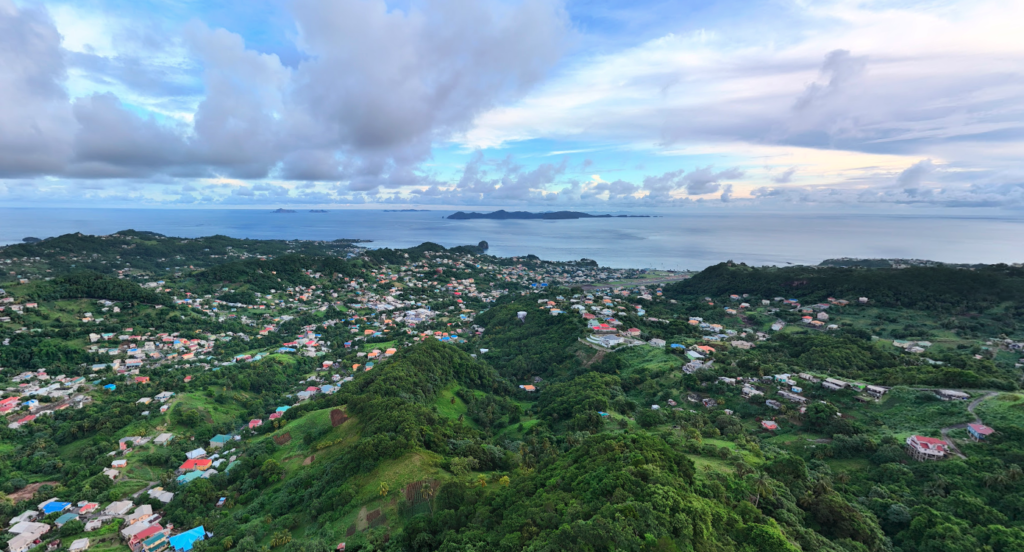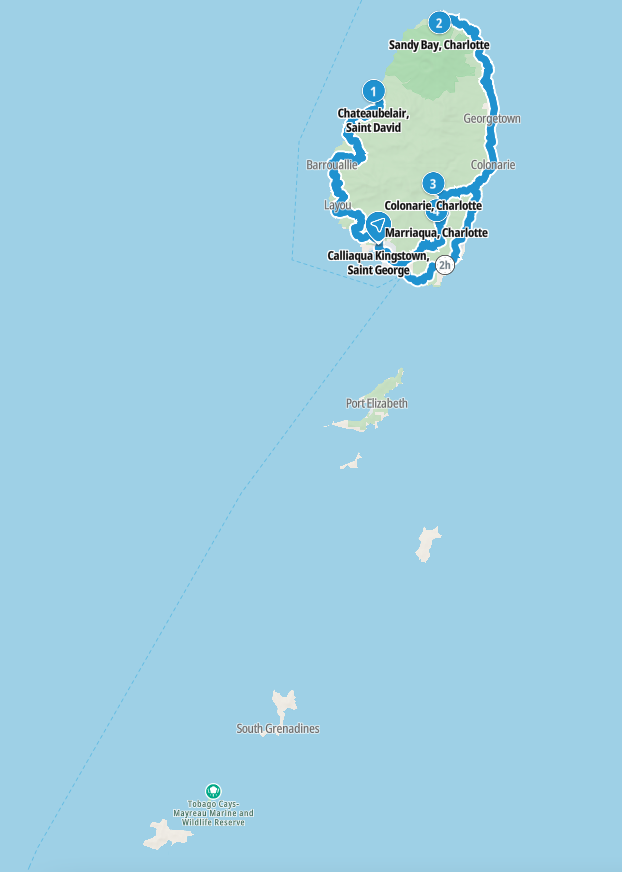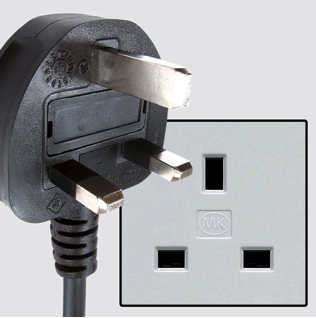Saint Vincent and the Grenadines – Let’s explore here
What’s it like in Saint Vincent and the Grenadines?
Saint Vincent and the Grenadines consists of a small island in the Caribbean along with 32 much smaller islands. It’s a relatively small country, the main island being just a bit larger than the Isle of Wight, England, UK, being approximately 18 miles long (29 km) and 11 miles (18 km) wide.
The main islands are Bequia, Canouan, Mayreau, Mustique, Palm, Petite Mustique, Pierre St Vincent (sometimes called PSV) and Union. There are many smaller islands including the Tobago Cays, which are home to excellent coral reefs. Mustique is a privately owned island.
It mostly consists of mountains and forest on Saint Vincent and the Grenadines, being part of a volcanic chain. The highest point is Mount La Soufrière at 4,052 ft (1,235m) above sea level.
The population of Saint Vincent and the Grenadines is around 111,000 (2022) and its capital, Kingstown, is home to around 13,000 people. It relies heavily on tourism like many other Caribbean islands, although its main source of income is banana production.

A bit about the history of Saint Vincent and the Grenadines
Early History and European Exploration
Saint Vincent and the Grenadines were originally inhabited by the Carib people. Christopher Columbus arrived in 1498, naming the island Saint Vincent, but the Spanish did not establish settlements. The islands remained largely untouched by European powers until the 17th century.
Colonial Rivalry and European Settlement
In the 17th century, the French and British began to compete for control of Saint Vincent and the Grenadines. The French established the first settlements on Saint Vincent in the 17th century, but British forces also began to exert influence in the region. The islands were used for sugar cultivation, with both the French and British relying on enslaved Africans to work on the plantations.
British Control
By the Treaty of Paris in 1763, Saint Vincent and the Grenadines became part of the British Empire. The British faced strong resistance from the indigenous Caribs, leading to several conflicts. The British eventually defeated the Caribs in the late 18th century, and the islands became a key part of the British Caribbean plantation economy, with sugar and other crops cultivated by enslaved Africans.
Slavery and Emancipation
Slavery was officially abolished in 1834, and the economy of Saint Vincent and the Grenadines shifted. However, after emancipation, many former slaves continued to work on the plantations under harsh conditions. The island’s economy continued to rely heavily on agriculture, particularly bananas, as the British Empire sought to maintain control of the lucrative trade.
Path to Self Government
Saint Vincent and the Grenadines gradually moved towards self governance in the 20th century. The island gained the right to elect members of the legislature in 1951, and full self government was achieved in 1969. However, the country remained a British colony, and the British monarch remained the head of state.
Independence
Saint Vincent and the Grenadines gained independence from the United Kingdom on 27 October 1979. It became a sovereign state within the Commonwealth, with the British monarch continuing as head of state, represented by a governor general. The country’s first Prime Minister was Sir James Fitz-Allen Mitchell.
Modern Saint Vincent and the Grenadines
Since independence, Saint Vincent and the Grenadines has worked to develop its economy, with tourism, agriculture and services becoming key industries. The country has remained politically stable, with a parliamentary democracy in place. Despite challenges such as vulnerability to natural disasters and economic reliance on agriculture, the nation has continued to make strides in areas like education and infrastructure.

Saint Vincent and the Grenadines road trip
Saint Vincent and the Grenadines is our seventh planned stop on our road trip through the islands of the Caribbean. Having explored Grenada, our next stop is Saint Lucia.
Travelling overland between the islands is quite prohibitive due to the lack of transportation options. Travelling between different island countries via ferry is possible, however, ferries only operate between some islands. Chartering private boats between islands is also possible, although travelling with a car in this way is prohibitive. Flying is another option, although again, flights only operate between some islands.
Map of our road trip through Saint Vincent and the Grenadines

This is a map of our planned route around the island of Saint Vincent, starting and ending in the capital, Kingstown.
Weather in Saint Vincent and the Grenadines
When is the best time to visit Saint Vincent and the Grenadines?
The best time to visit Saint Vincent and the Grenadines is from February to April. During these months, the islands have 8 hours of sunshine per day and rainfall of 2.8 – 3.5 inches (70 – 90mm) per month. The temperature ranges from 24 – 30°C (75 – 86°F).
When is the worst time to visit Saint Vincent and the Grenadines?
The worst time to visit Saint Vincent and the Grenadines is from June to November. During these months, the islands still have 8 hours of sunshine per day. However, humidity rises and it rains 8.1 – 10.0 inches (205 – 255mm) per month at the coast, more inland. The temperature ranges from 25 – 31°C (78 – 89°F).
Hurricane Season in the Caribbean
Hurricane season in the Caribbean runs from June 1 to November 30. Storms tend to be more frequent and more severe in the latter half of the season.
Hurricanes are least likely during December, January and February.
Travel in and around Saint Vincent and the Grenadines
Travelling between Kingstown in Saint Vincent and Bequia in the Grenadines
Ferries travel between the islands every day including Sundays and bank holidays, via Bequia Express Ferries and Admiral Ferries. Jaden Sun Ferry also travels between the islands, although on a less frequent basis.
Travelling between Kingstown in Saint Vincent and Canouan, Mayreau and Union island in the the Grenadines
Ferries travel between the islands Mondays – Fridays only, excepting bank holidays, via the Jaden Sun Ferry.
The MV Gem Star ferry used to travel to the Grenadines but is closed until further notice (December 2024). The MV Barracouda ferry has also closed until further notice (December 2024) due to damage caused when Hurricane Beryl hit in July 2024.
Travelling between Kingstown in Saint Vincent and Palm island and Pierre St Vincent island in the the Grenadines
The MV Guidance ferry used to travel this route but was tragically lost to sea (December 2024) when Hurricane Beryl hit in July 2024.
Ferries to other Caribbean island countries from Grenada
There are no longer any ferries to other island countries in the Caribbean from Saint Vincent and the Grenadines (2024). The MV Guidance ferry used to travel between Kingstown in Saint Vincent and Petit Martinique in Grenada, however the ferry was tragically lost to sea (December 2024) when Hurricane Beryl hit in July 2024.
What’s it like to drive in Saint Vincent and the Grenadines?
They drive on the left hand side of the road in Saint Vincent and the Grenadines. There are not many roads in Saint Vincent and the Grenadines and those outside of the capital are in a fairly poor condition, with many minor roads being dirt tracks.
We’ve also created a dedicated page to driving abroad, which you might find helpful 🙂
What currency do they use in Saint Vincent and the Grenadines?
In Saint Vincent and the Grenadines they use the East Caribbean dollar. Cash is widely used. The use of credit / debit cards is widely accepted in major cities, although not in rural areas. Travellers cheques are not accepted in the main. There are ATMs in cities, although not all accept foreign issued cards.
You should make yourself aware of the amount that your bank charges you for using credit and debit cards abroad. Often credit cards are cheaper for purchasing items directly, and for withdrawing cash from ATMs.
What language do they speak in Saint Vincent and the Grenadines?
They speak English and Creole in Saint Vincent and the Grenadines. English is spoken in tourist areas.
What time zone is Saint Vincent and the Grenadines in?
Remember, when you’re planning your next trip to take a look at what time zone it’s in.
Do I need a visa to visit Saint Vincent and the Grenadines?
We’ve created a dedicated, more comprehensive page on visas, which you should find helpful. Check it out!
Is wild camping legal in Saint Vincent and the Grenadines?
No, wild camping is not widely accepted in Saint Vincent and the Grenadines.
What plug / socket type do they use in Saint Vincent and the Grenadines?
In Saint Vincent and the Grenadines they use plug / socket types A, B and G.



Health issues in Saint Vincent and the Grenadines
Is it safe to drink water in Saint Vincent and the Grenadines?
Yes, it is safe to drink tap water in Saint Vincent and the Grenadines. Bottled water is also readily available across the country.
What vaccinations are required for Saint Vincent and the Grenadines?
This NHS website is kept up to date with all relevant information on vaccinations in Saint Vincent and the Grenadines.
Phones in Saint Vincent and the Grenadines
What is the country calling code for Saint Vincent and the Grenadines?
The country calling code for Saint Vincent and the Grenadines is +1 784
What are the emergency phone numbers in Saint Vincent and the Grenadines?
- The emergency number for police in Saint Vincent and the Grenadines is: 112 / 999 / 911
- In Saint Vincent and the Grenadines, the emergency number for ambulance is: 112 / 999 / 911
- The emergency number for fire in Saint Vincent and the Grenadines is: 112 / 999 / 911
If you’ve got some useful info that you’d like to share, let us know!
And don’t forget to check out all the other pictures!
